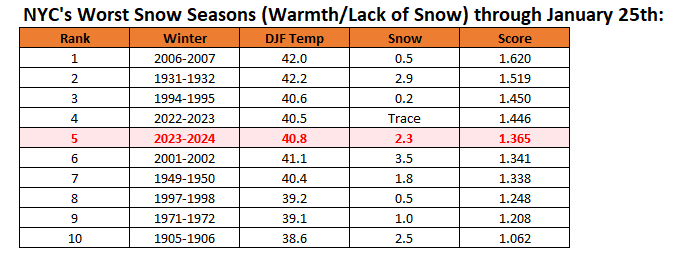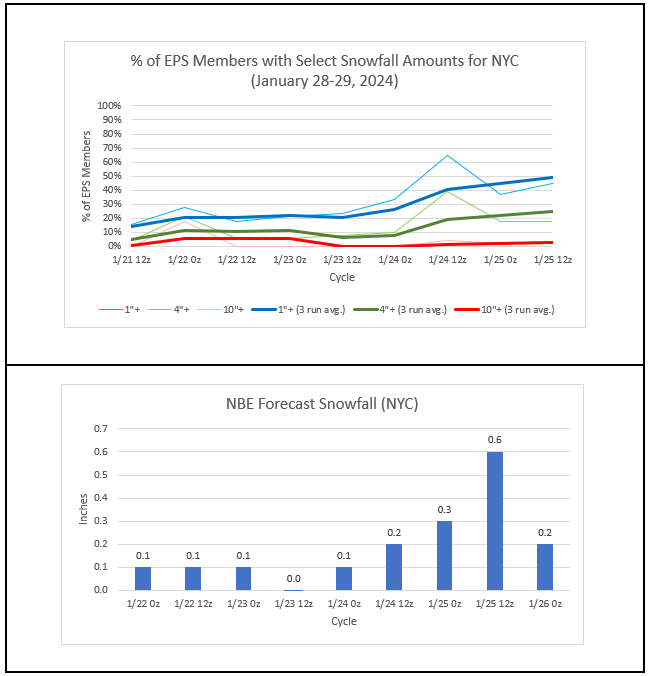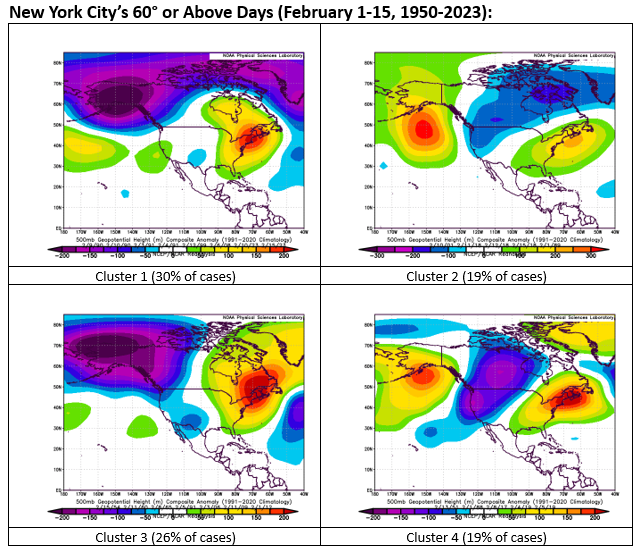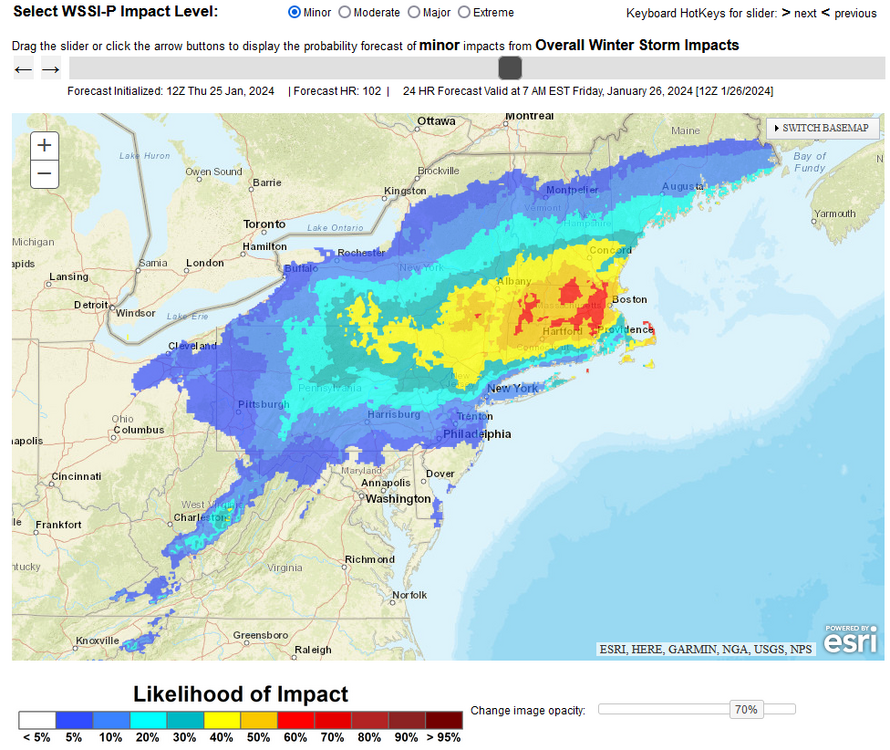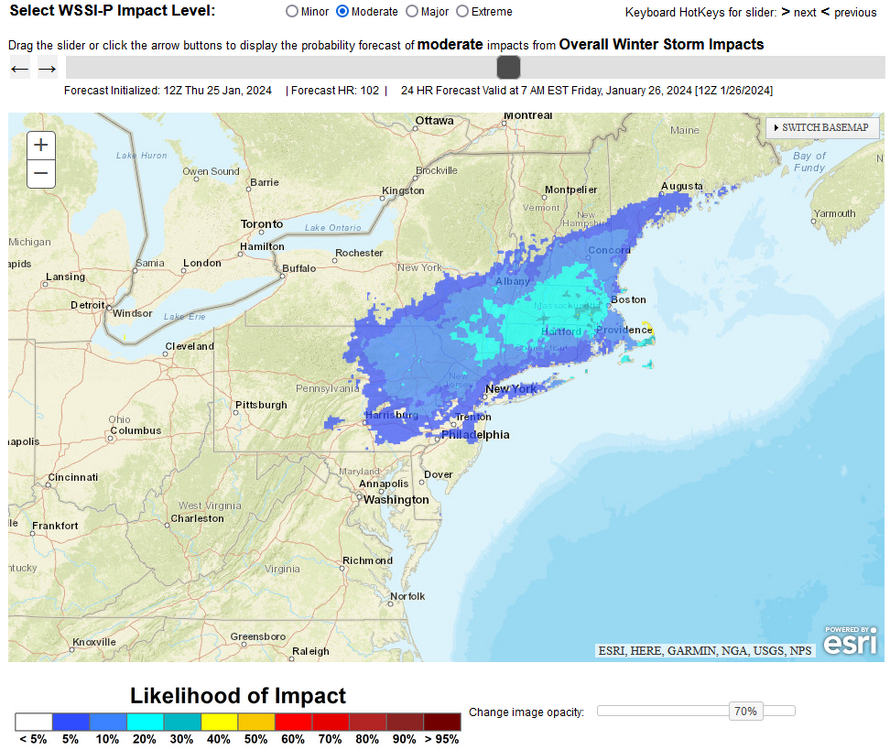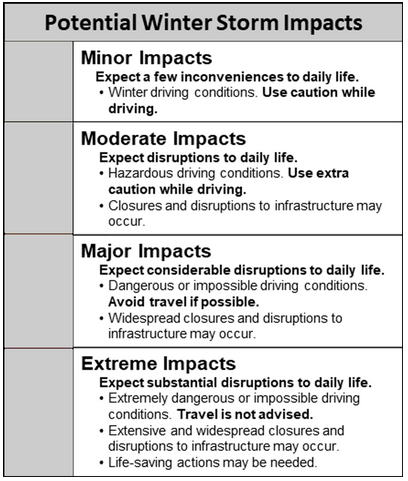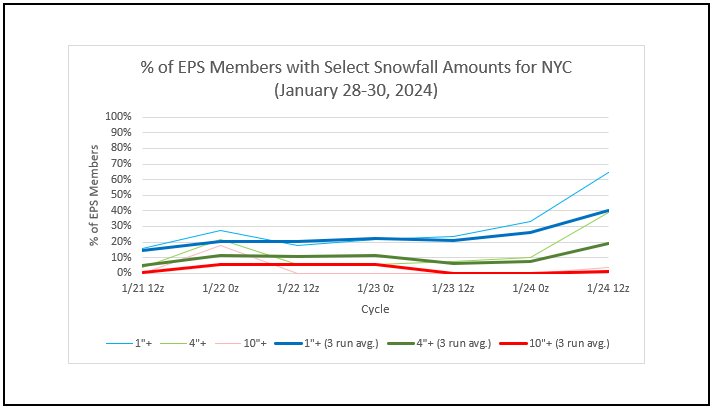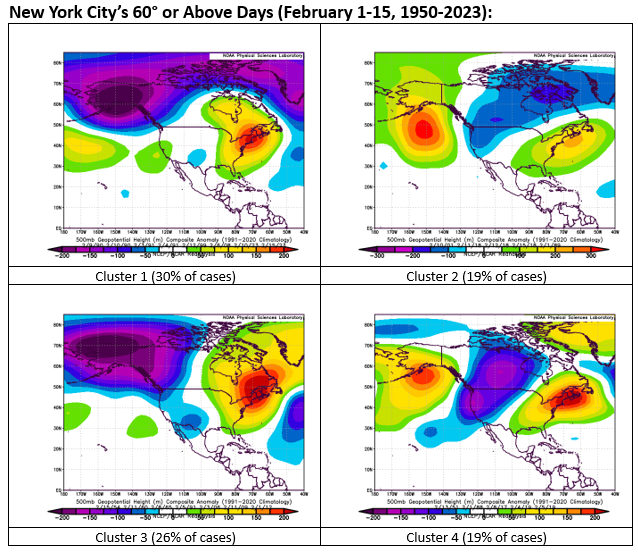-
Posts
22,983 -
Joined
Content Type
Profiles
Blogs
Forums
American Weather
Media Demo
Store
Gallery
Everything posted by donsutherland1
-
New York City's Winter Futility Rankings (through January 25th): The 10 worst winters prior to 2023-2024 through January 25th saw the following seasonal outcomes: Mean seasonal snowfall: 11.0" Median seasonal snowfall: 12.1" 20" or more seasonal snowfall: 20% <10" seasonal snowfall: 40% Highest seasonal snowfall: 22.9", 1971-1972 Lowest seasonal snowfall: 2.3", 2022-2023
-
NYC (60), EWR (61), and LGA (60) have all hit 60 this month (January 13th). JFK has not.
-
Despite light rain, clouds, and fog, the temperature surged to near record and record highs today. High temperatures included: Bridgeport: 53° Islip: 57° (old record: 55°, 2010) New Haven: 59° (old record: 55°, 2010) New York City-Central Park: 59° New York City-JFK Airport: 54° (tied record set in 1972) New York City-LaGuardia Airport: 57° (tied record set in 1967) Newark: 59° (tied record set in 1972 and tied in 2010) The frontal boundary will sag southward overnight bringing slightly cooler air to the region to end the week. As a result, the mercury will likely hold in the middle and upper 40s in New York City and Newark tomorrow. Farther south, Philadelphia could see the temperature rise well into the 50s while Washington, DC basks in temperatures in the upper 60s. This warm period will assure that January will wind up as a warmer than normal month and Winter 2023-24 will become yet another warmer than normal winter in the New York City and Philadelphia areas. The generally mild conditions could continue into the first week of February with only brief interruptions. Another storm will bring additional rain to the region. The rain could end as a period of wet snow in New York City. Accumulating snow is likely well north and west of New York City and across central New England. The ENSO Region 1+2 anomaly was +0.8°C and the Region 3.4 anomaly was +1.7°C for the week centered around January 17. For the past six weeks, the ENSO Region 1+2 anomaly has averaged +1.10°C and the ENSO Region 3.4 anomaly has averaged +1.92°C. A basinwide El Niño event is ongoing. The ongoing El Niño event has recently peaked and will continue to fade. The SOI was -4.05 today. The preliminary Arctic Oscillation (AO) was +2.497 today. On January 23 the MJO was in Phase 5 at an amplitude of 2.586 (RMM). The January 22-adjusted amplitude was 2.710 (RMM). Based on sensitivity analysis applied to the latest guidance, there is an implied near 100% probability that New York City will have a warmer than normal January (1991-2020 normal). January will likely finish with a mean temperature near 36.5° (2.8° above normal).
-
Islip also set a record at 57 (old record: 55, 2010).
-
Is there any chance this winter can be graded on a curve?
-
I agree with Eric. The core of the above average 500 mb height anomalies would need to be over the Northeastern U.S. or southern Quebec to bring about such warmth.
-
Latest EPS and NBE numbers: The area of potentially appreciable with perhaps some pockets of significant snowfall will likely be north of the New York City and Newark areas. It will likely run from northwest New Jersey eastward across the Hudson Valley (northern half would do better than the southern half under the present guidance) and across central New England, including Poughkeepsie, Hartford, Worcester, and Boston.
-
Fortunately, change is on the horizon.
-
Tomorrow will be another rainy, foggy, and mild day. The temperature will top out in the lower 50s across much of the New York City area. The frontal boundary will then sag southward bringing slightly cooler air to the region to end the week. The mercury will likely hold in the upper 40s and perhaps reach 50° in New York City and Newark on Friday. Farther south, Philadelphia could see the temperature approach 60° while Washington, DC basks in temperatures in the upper 60s. This warm period will assure that January will wind up as a warmer than normal month and Winter 2023-24 will become yet another warmer than normal winter in the New York City and Philadelphia areas. The generally mild conditions could continue into the first week of February with only brief interruptions. Another storm will bring additional rain to the region. The rain could change to or end as a period of snow in New York City. Accumulating snow is likely north and west of New York City and across central New England. Some of the guidance brings accumulating snow into New York City, so the situation will have to be monitored. The ENSO Region 1+2 anomaly was +0.8°C and the Region 3.4 anomaly was +1.7°C for the week centered around January 17. For the past six weeks, the ENSO Region 1+2 anomaly has averaged +1.10°C and the ENSO Region 3.4 anomaly has averaged +1.92°C. A basinwide El Niño event is ongoing. The ongoing El Niño event has recently peaked and will continue to fade. The SOI was -4.05 today. The preliminary Arctic Oscillation (AO) was +3.599 today. That's the highest figure this winter. In addition, the EPO has now gone positive. On January 22 the MJO was in Phase 5 at an amplitude of 2.710 (RMM). The January 21-adjusted amplitude was 2.816 (RMM). Based on sensitivity analysis applied to the latest guidance, there is an implied 99% probability that New York City will have a warmer than normal January (1991-2020 normal). January will likely finish with a mean temperature near 36.4° (2.7° above normal).
-
Historical climatology, which favors areas north of NYC into New England, including Boston, noted, the Sunday-Monday storm is worth watching. While it's premature to embrace any solutions, when the two highest-scoring models (ECMWF and GGEM) reach agreement on a scenario, it bears watching.
-
Boston can sometimes score big in the kind of pattern that is forecast. The biggest example is the February 8-9, 2015 storm. Boston picked up 22.2" of snow. New York City recorded a trace. If any of the major I-95 cities (Richmond to Boston) has a reasonable chance at seeing 4" or more of snow, Boston is that city. That's not a guarantee, but the probability is far greater than for the other major I-95 cities.
-
The first week of February will start unseasonably mild (40s and perhaps a few days of 50° or above in New York City). However, as some have pointed out, it won't be a "blowtorch." To get much warmer readings (60° or above) during the first half of February, the core of much above normal 500 mb height anomalies should be over the Northeastern U.S. or southern Quebec (accounts for almost 74% of such cases during February 1-15, 1950-2023). Instead, the EPS forecasts the core of the much above normal 500 height anomalies to be anchored in the vicinity of the Hudson Bay. Therefore, the most impressive warmth will likely be focused on the Great Lakes Region, Northern Plains, and central Canada. Below are clusters of outcomes that account for 25 of the 27 (93%) of 60° cases.
-
It is currently sleeting in Larchmont.
-
The temperature reached 40° in Central Park for the first time since January 14th when the mercury topped out at 44°. Even milder conditions lie ahead. Temperatures could peak in the middle and upper 50s in New York City and Newark and 60s from Philadelphia southward on Friday. Somewhat cooler air will arrive during the weekend. This warm period will assure that January will wind up as a warmer than normal month and Winter 2023-24 will become yet another warmer than normal winter in the New York City and Philadelphia areas. The generally mild conditions could continue into the first week of February with only brief interruptions. A storm will likely bring 0.50"-1.50" of precipitation to the region late tomorrow into Friday morning. Additional rain is possible during the weekend. The ENSO Region 1+2 anomaly was +0.8°C and the Region 3.4 anomaly was +1.7°C for the week centered around January 17. For the past six weeks, the ENSO Region 1+2 anomaly has averaged +1.10°C and the ENSO Region 3.4 anomaly has averaged +1.92°C. A basinwide El Niño event is ongoing. The ongoing El Niño event has recently peaked and will continue to fade. The SOI was -6.45 today. The preliminary Arctic Oscillation (AO) was +3.153 today. On January 21 the MJO was in Phase 5 at an amplitude of 2.816 (RMM). The January 20-adjusted amplitude was 2.838 (RMM). Based on sensitivity analysis applied to the latest guidance, there is an implied 98% probability that New York City will have a warmer than normal January (1991-2020 normal). January will likely finish with a mean temperature near 36.4° (2.7° above normal).
-
Correct. The latest forecast for the AO’s going negative in the extended range reinforces the idea that a change to colder conditions will take place. The transition could start during the second week of the month and be complete near mid-month +/- a few days, closely matching ENSO climatology.
-
Moderate La Niña.
-
1966-67 was a neutral to somewhat negative PNA winter.
-
The Texas cold shot was more extreme relative to normal and relative to the region's records. Numerous monthly and all-time records were set during the Texas cold shot.



